
Building HospitalsSupporting hospital construction from the operational aspects
From improving nursing services to enabling a smooth patient transferToyama Nishi General Hospital and Toyama Nishi Rehabilitation Hospital
Toyama Nishi Rehabilitation Hospital (left) and Toyama Nishi General Hospital (right)
For thirty years, The Yatsuo General Hospital served the medical needs of the Etchu Yatsuo area of Toyama Prefecture. In February 2018, it took on the administration of the nearby Yamada Onsen Hospital and relocated the two hospitals to two newly constructed adjacent buildings.
The 154-bed Toyama Nishi General Hospital (formerly Yatsuo General Hospital) and the 120-bed Toyama Nishi Rehabilitation Hospital (formerly Yamada Onsen Hospital) now provide integrated medical care ranging from acute care to rehabilitation and chronic care.
Shimizu the construction of the new buildings and also helped the hospitals to improve their administrative operations.
Quantitative Survey of Nursing Services to Assist with Proper Allocation of Personnel
Reallocation of nursing staff in the community-based integrated care ward* was a challenge at Yatsuo General Hospital prior to the relocation. The patient to nurse ratio was 10:1 at the time while the standard for community-based integrated care ward was 13:1. The hospital therefore needed to reassess the division of duties among nurses and nursing assistants to achieve the proper allocation.
Shimizu conducted a survey of the duties performed by nurses and nursing assistants and the time spent on those duties, and visualized them in a manner that was easy to understand. The results made it clear that some of the nurses' tasks could be reassigned to nursing assistants. The division of duties was revised, and proper allocation of personnel was achieved. This freed up time for nurses to provide more direct nursing care.
*Community-based integrated care ward: This type of hospital ward provides medical therapy, rehabilitation, and other services that enable patients who have been moved from acute care and have stabilized to live at home or in a facility. It also admits and provides medical care to home care patients when they need to be hospital treatment.
The survey of nursing care duties resulted in revisions to the late shift
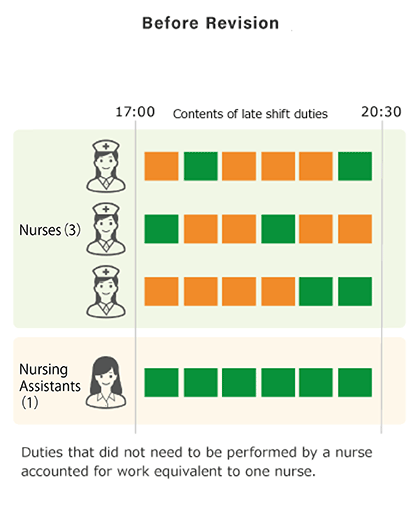
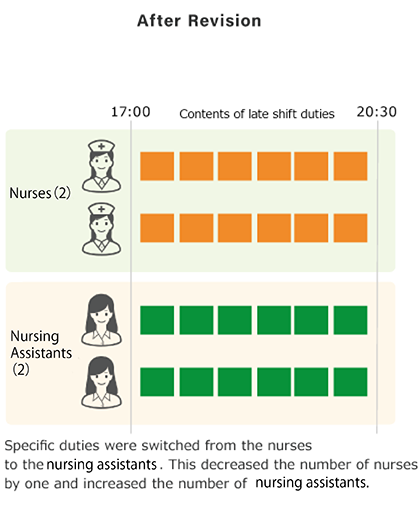

Proper allocation of nursing personnel at the community-based integrated care ward


Integrating Logistics in Two Hospitals with Different Methods
We also analyzed the internal logistics (methods for supplying medical supplies, exam specimens, pharmaceuticals, food, and linens) of the two hospitals. This made it clear who was supplying what, and when and how they were supplying it. Methods of streamlining operations after relocating to the new buildings were considered.
For example, each hospital differed in the way it supplied bedding, towels, and other linens. One had an outside linen supplier deliver the linens directly to each ward. The other had the supplier deliver the linens to central storage and it was subsequently transported by hospital staff. After surveying the current conditions at the two hospitals, we considered the location to supply linens to, the transport staff, the time schedule for the elevator, and other factors, and negotiated with the supplier. The new hospitals adopted the same method of having the outside supplier delivery the linens to each ward.
This enabled the central storage to be used for something other than linens, and enabled staff to work smoothly when personnel are transferred between the two hospitals.
Initiative in Common Methods of Internal Logistics Management (Example of Linens)
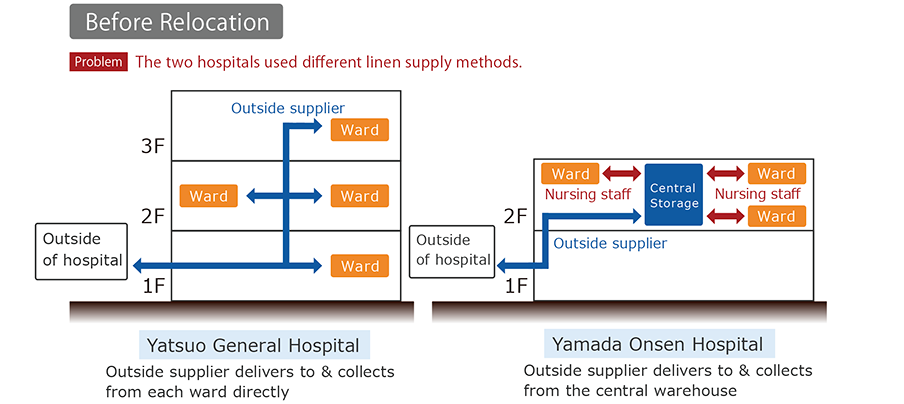

Formulation of Patient Transfer Manual and Rehearsal
To ensure the safe and uneventful transfer of patients from the old hospitals to the new hospitals, we confirmed the division of duties and vehicle arrangements beforehand, identified what elements could easily be omitted, and provided advice on taking steps to respond.
We also established a safe transport route that took into consideration moving wheelchairs, stretchers, and other mobility devices. We assisted with the formulation of a reliable patient transfer plan and transfer manual, which included creating a transfer day time schedule. Holding two rehearsals enabled us to test the procedure, verify safety and refine the plan. This resulted in the smooth transfer of patients.

Flow for Considering Patient Transfer



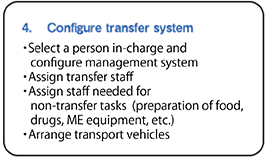


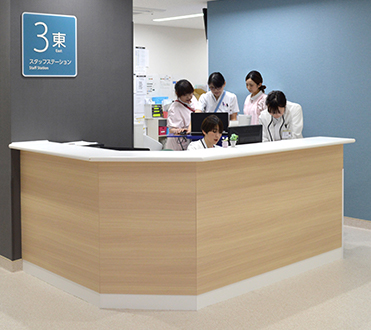

Construction of the facility provided an opportunity to improve operations
Building new facilities for hospitals that had been built decades ago provided the opportunity to make substantial changes to aspects of hospital operation as well as the building and other physical aspects. There might be cases where building a new facility improves operational efficiency and patient service.
Shimizu’s goal is to build hospitals in which the facility is compatible with efficient management and we help to improve various operating processes during the rebuilding process.
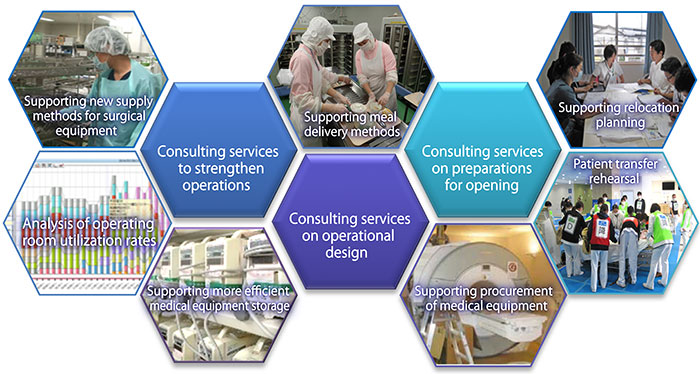
From our Clients
Atsuko Fujioka (right) Head of Nursing Department & Deputy Director
Kimiko Takado (left) Director of Nursing
Toyama Nishi General Hospital
Shimizu was the only company that could provide a proposal for everything, including consulting on improving operations when rebuilding the hospitals. They investigated the problems we had and worked with us to consider specific concrete ways to solve them.
In the initiative to achieve proper allocation of nurses and nursing assistants on community-based integrated care ward, some voiced concerns over the danger of reducing the number of nurses from the current level. However, clarifying roles enabled nursing assistantss to take on more responsibilities and this enabled nurses to spend more time close to their patients.
When we heard that the founder of Shimizu was from Toyama, we felt a connection with our hospitals, which provide community-based medical care in Toyama.
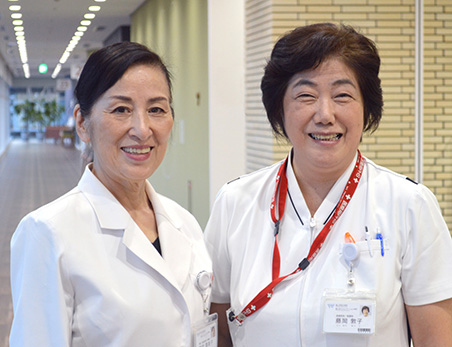
The information posted here is the current information on January 24, 2019.
Please be aware that this information may have changed by the time you view it.



